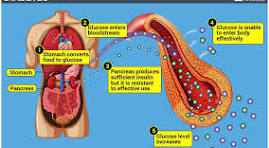INTRODUCTION:
Health is wealth—a simple yet profound truth. One sickness can drain a
lifetime of savings, leaving individuals and families in distress. While modern
medicine has made remarkable strides in diagnosing and treating diseases, many
health conditions continue to defy medical solutions, pushing us to explore
alternative approaches.
Natural remedies have been a cornerstone of healing for centuries, long before
the advent of modern pharmaceuticals. Across cultures and civilizations, people
have relied on nature’s gifts—herbs, roots, fruits, and holistic practices—to
restore health and vitality.
NATURAL REMEDIES FOR BLEPHAROSPASM(Eye Twitching)
Blepharospasm, commonly referred to as eyelid twitching, is an
involuntary spasm or movement of the eyelid muscles. This condition
is often benign and self-limiting but can become persistent or disruptive
in certain cases. Contributing factors include fatigue, stress, caffeine
intake, prolonged screen exposure, dehydration, or nutrient
deficiencies. In some cases, blepharospasm may signal an underlying
neurological condition and require medical evaluation. For mild and
occasional twitching, several natural remedies can help relieve
discomfort and prevent recurrence.
1. Eye Compress with Warm Tea Bags
Applying warm tea bags to the eyelids may relax eye muscles and
reduce tension.
How it works: Tea, especially chamomile and green tea, contains
antioxidants and anti-inflammatory properties that can soothe
irritated tissues and support relaxation.
Preparation: Steep two tea bags in hot water for 2–3 minutes,
then allow them to cool to a warm (not hot) temperature.
Usage: Place one tea bag over each closed eyelid and rest for 10–
15 minutes. Use this remedy once or twice daily for several days.
2. Gentle Eye Massage
Tactile stimulation can help reduce muscular tension and improve
circulation.
How it works: Massage increases localized blood flow and may
calm overactive muscles around the eye.
Preparation: Wash hands thoroughly before touching your face.
Usage: With closed eyes, use clean fingertips to massage the
affected eyelid in gentle circular motions for 1–2 minutes,
repeating several times daily.
3. Hydration and Balanced Diet
Nutrient and fluid deficiencies can directly influence nerve and
muscle function.
How it works: Dehydration and lack of essential nutrients like
magnesium, B vitamins, and calcium can cause or worsen muscle
twitching.
Preparation: Maintain hydration by drinking water regularly.
Include leafy greens, nuts, seeds, dairy products, and whole grains
in your diet.
Usage: Ensure consistent daily intake of fluids (at least 8 glasses
of water) and a diet rich in essential micronutrients.
4. Eye Exercises
Relieving digital eye strain can reduce fatigue-induced twitching.
How it works: Regularly shifting visual focus can ease muscular
tension and reduce strain from prolonged screen time.
Preparation: Choose a comfortable seated position. Identify one
object nearby and another at least 20 feet away.
Usage: Alternate focus between near and far objects every 20
seconds, repeating for 2–3 minutes. Perform several times a day,
especially during screen use.
5. Stress Reduction and Sleep Hygiene
Mental and physical stress are significant contributors to facial
muscle spasms.
How it works: Reducing stress hormone levels and allowing the
body proper rest helps restore normal muscle function.
Preparation: Practice mindfulness, breathing exercises, or yoga.
Establish a calming bedtime routine.
Usage: Incorporate stress management techniques daily and aim
for 7–8 hours of uninterrupted, restorative sleep each night.
6. Magnesium Supplementation
Supporting neuromuscular health through mineral balance can be
key.
How it works: Magnesium is critical for muscle and nerve
function, and its deficiency is commonly associated with spasms.
Preparation: Available as magnesium citrate, oxide, or glycinate
in capsule or powder form.
Usage: Only begin supplementation after consulting a healthcare
professional. Adhere strictly to the prescribed dosage, as excess
magnesium can cause digestive upset.
7. Cucumber Slices for Soothing Relief
Cooling the eyelid area may reduce irritation and inflammation.
How it works: Cucumber contains antioxidants and its hydrating
effect calms the tissues surrounding the eye.
Preparation: Cut fresh cucumber into thin slices and refrigerate
them for 10–15 minutes.
Usage: Place the chilled slices on closed eyelids and rest for 10–
15 minutes. Use as needed for symptomatic relief.
Key Considerations
Most cases of eyelid twitching resolve without intervention. However,
persistent or worsening blepharospasm, particularly when associated
with other facial muscle spasms, vision changes, or neurological
symptoms, should be evaluated by a physician or ophthalmologist.
Conditions such as benign essential blepharospasm or hemifacial
spasm may require more advanced interventions, including botulinum
toxin injections or neurological imaging. Natural remedies can support
relaxation and symptom relief but are not substitutes for professional
care in moderate or severe cases.



